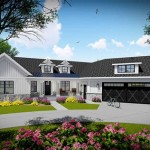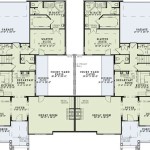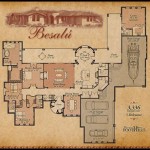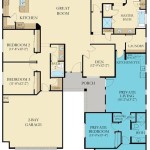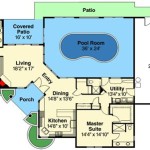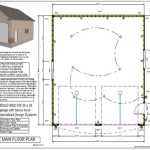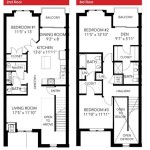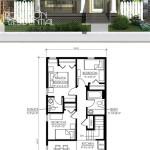House Plans Under 250k To Build: A Comprehensive Guide
Building a new home is a significant financial investment, and navigating the complexities of construction costs can be daunting. For many prospective homeowners, the target budget of $250,000 represents a critical threshold. This article will explore the landscape of house plans that fall within this price range, examining the factors that influence affordability and providing practical guidance for achieving the dream of homeownership without exceeding budget limitations.
The possibility of constructing a home for under $250,000 is certainly achievable in many regions, but it demands careful planning, realistic expectations, and a willingness to make strategic compromises. The final cost of a home is not solely determined by the house plan itself but is also heavily influenced by geographic location, material choices, labor costs, and site-specific conditions. Therefore, a thorough understanding of these interconnected elements is crucial for successful project management.
When considering house plans within this budget, it's essential to recognize that the size and features of the home may need to be adjusted to align with financial constraints. Focusing on efficiency, simplicity, and cost-effective design choices will be paramount. The following sections will delve into specific strategies for maximizing affordability and ensuring that the final product meets both functional and aesthetic needs without breaking the bank.
Understanding the Key Cost Drivers in Home Construction
Several factors contribute to the overall cost of building a house. Awareness of these cost drivers allows for informed decision-making throughout the planning and construction phases. Ignoring them can lead to unexpected expenses and budget overruns.
Firstly, land acquisition is a substantial expense. The price of land varies significantly depending on location, size, topography, and accessibility. Undeveloped land often requires additional investment for utilities, road access, and clearing. Before selecting a house plan, a suitable building site must be identified and its associated costs accurately assessed. This includes surveying, soil testing, and permit fees related to land development.
Secondly, material costs fluctuate based on market conditions and supply chain dynamics. Lumber, concrete, roofing materials, windows, doors, plumbing fixtures, and electrical components all contribute to the overall expense. Smart material selection, such as opting for readily available and locally sourced materials, can significantly reduce costs. Exploring alternative materials that offer comparable performance at a lower price point is also a viable strategy. For example, opting for durable vinyl siding instead of more expensive cedar siding can produce substantial savings.
Thirdly, labor constitutes a significant portion of the construction budget. The cost of hiring contractors, subcontractors, and skilled tradespeople such as carpenters, plumbers, and electricians varies depending on experience, demand, and geographic location. Obtaining multiple bids from qualified professionals is crucial for ensuring competitive pricing. The complexity of the house plan also impacts labor costs; simpler designs with fewer intricate details generally require less labor and result in lower overall expenses. Careful consideration of the construction schedule and project timeline can also mitigate labor costs. Delays can lead to increased labor expenses and potentially impact the overall budget.
Finally, permits and fees associated with building codes, zoning regulations, and utility connections can add to the overall cost. These fees vary depending on the local municipality and the scope of the project. Researching and understanding all applicable permits and fees upfront is essential for accurate budgeting. Furthermore, design choices that simplify code compliance can also lead to cost savings. For example, adhering to standard construction practices and avoiding complex architectural features can streamline the permitting process and reduce the likelihood of costly revisions.
Strategies for Choosing Affordable House Plans
Selecting the right house plan is a critical step in staying within a $250,000 budget. Certain design characteristics and architectural styles are inherently more cost-effective to build than others. Focusing on these attributes will maximize affordability.
One key strategy is to choose a smaller house plan. Reducing the square footage directly translates into lower material and labor costs. Prioritizing essential living spaces and minimizing unnecessary features can significantly reduce the overall project expense. Consider open-concept layouts that maximize usable space and minimize the need for interior walls. These layouts create a more spacious feel and can reduce the cost of framing, drywall, and other interior finishes.
Another important consideration is the simplicity of the design. Complex rooflines, intricate architectural details, and custom features all add to the cost of construction. Opting for a simple, rectangular or square footprint with a straightforward roof design will significantly reduce both material and labor expenses. Gable roofs are generally more cost-effective than hip roofs, for example. Minimizing exterior details, such as excessive trim or ornate window designs, can also contribute to cost savings.
Single-story ranch homes are often more affordable to build than multi-story homes. They require less structural support and are generally easier to construct. However, the size of the lot will be a factor in determining whether a single-story plan is feasible. If land costs are high, a two-story home on a smaller footprint may be a more cost-effective option. Consider the efficiency of the foundation design. Slab foundations are generally less expensive than crawl spaces or basements. However, the suitability of a slab foundation depends on soil conditions and local climate. Consulting with a structural engineer is essential to determine the most appropriate and cost-effective foundation option.
Furthermore, look for house plans that incorporate standard-sized building materials. This reduces waste and minimizes the need for custom cuts, which can increase both material and labor costs. For example, designing window and door openings to accommodate standard sizes will streamline the installation process and reduce the overall expense.
Finally, consider purchasing pre-drawn house plans rather than commissioning custom designs. Pre-drawn plans are typically more affordable and readily available. Many websites and architectural firms offer a wide variety of house plans that can be modified to meet specific needs. This can save significant time and money compared to starting from scratch with a custom design.
Optimizing Material Choices and Construction Methods for Cost Savings
Beyond the house plan itself, the selection of building materials and construction methods plays a crucial role in staying within a $250,000 budget. Making informed decisions about these elements can yield substantial cost savings without sacrificing quality or durability.
One key area to focus on is the selection of exterior cladding. Vinyl siding remains one of the most cost-effective options, offering durability, low maintenance, and a wide range of colors and styles. Fiber cement siding is another affordable alternative that provides a more upscale look than vinyl. While brick and natural stone are aesthetically appealing, they are significantly more expensive and require skilled labor for installation.
For roofing materials, asphalt shingles are generally the most economical choice. They are readily available, relatively easy to install, and offer adequate protection against the elements. Metal roofing is a more durable option, but it comes with a higher price tag. Consider the long-term cost savings associated with a more durable roofing material, such as reduced maintenance and replacement costs.
Interior finishes also offer opportunities for cost savings. Opting for laminate or vinyl flooring instead of hardwood can significantly reduce material and installation costs. In wet areas, such as bathrooms and kitchens, consider using ceramic or porcelain tile, which are durable and relatively affordable. Choose standard-grade cabinets and countertops for kitchens and bathrooms. These are typically less expensive than custom-made options and offer a wide range of styles and finishes. Focus on functionality and durability rather than high-end aesthetics.
Furthermore, explore energy-efficient building practices to reduce long-term operating costs. Proper insulation, energy-efficient windows and doors, and a high-efficiency HVAC system can significantly lower utility bills. While these features may require a slightly higher initial investment, the long-term cost savings can quickly offset the additional expense. Consider incorporating passive solar design principles to maximize natural light and minimize the need for artificial lighting.
Finally, consider alternative construction methods, such as modular or prefabricated homes. These methods can often reduce construction time and labor costs. Modular homes are built in a factory and then assembled on site, which can significantly speed up the construction process. Prefabricated homes offer a similar advantage, with components being manufactured off-site and then assembled on the building site. While these methods may not be suitable for all projects, they can be a viable option for achieving affordability.
In conclusion, building a house for under $250,000 requires careful planning, strategic decision-making, and a willingness to prioritize affordability. By understanding the key cost drivers, choosing cost-effective house plans, and optimizing material choices and construction methods, prospective homeowners can achieve their dream of homeownership without exceeding their budget limitations.

Est House Plans To Build Simple With Style Blog Eplans Com

How To Build A House For Under 250k Steiner Homes Nwi
Low Cost Two Y House Design 6 Double Story Homes Under 250k In Architecture

Low Cost Two Y House Design 6 Double Story Homes Under 250k In Architecture

16 Barndominium Under 250k With 60k Land Ideas In 2024 House Plans Floor

Est House Plans To Build Simple With Style Blog Eplans Com

Building On The Affordable House Plans Of 2024 Houseplans Blog Com

Modern Farmhouse Plans Custom New Homes Built On Your Land

Affordable House Plans Home Designs The Designers

Looking For A Home With Budget Of 250k Can Be Tough Learn How We Build You Custom Adair Homes Plans Open Concept

